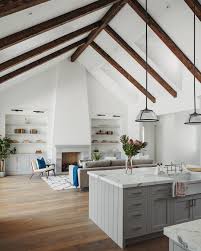Painting your home’s interior is one of the most effective ways to refresh your space and add a personal touch. Whether you’re looking to create a cozy atmosphere in the living room or a vibrant feel in the kitchen, a fresh coat of paint can make a significant difference. In this comprehensive guide, we’ll explore everything you need to know about painting your home’s interior, from choosing the right colors to mastering the techniques that will give you a professional finish. Let’s dive into the world of trendyhome improvement and transform your space with a new coat of paint.
1. Choosing the Right Colors
The first step in any painting project is selecting the right colors. Consider the mood you want to create in each room. Light, neutral colors can make a room feel more spacious and airy, while bold, vibrant colors can add energy and character. Don’t be afraid to use accent walls to add a pop of color without overwhelming the space. Take into account the existing furniture and decor to ensure the colors complement each other.
2. Gathering Supplies
Before you start painting, make sure you have all the necessary supplies. Here’s a basic list to get you started:
- Paint (enough to cover the square footage of your room)
- Primer (if needed)
- Paint brushes (various sizes)
- Rollers and roller covers
- Paint tray and liners
- Painter’s tape
- Drop cloths or plastic sheeting
- Sandpaper
- Putty knife and spackle (for filling holes)
- Ladder or step stool
3. Preparing the Room
Proper preparation is key to achieving a professional finish. Start by removing furniture or covering it with drop cloths. Protect your floors with plastic sheeting or drop cloths. Use painter’s tape to mask off areas you don’t want to paint, such as trim, windows, and ceilings. Clean the walls thoroughly to remove dust and grime. Fill any holes or cracks with spackle and sand them smooth once dry.
4. Priming the Walls
Priming is an important step, especially if you’re painting over a dark color or a surface that has never been painted before. Primer helps the paint adhere better and ensures even coverage. Apply a coat of primer using a roller, and use a brush for edges and corners. Allow the primer to dry completely before moving on to the paint.
5. Cutting In
Cutting in refers to painting the edges and corners of the room where the roller can’t reach. Use a high-quality brush to cut in along the ceiling, baseboards, and around windows and doors. Take your time with this step, as clean edges will make a big difference in the overall appearance of the room.
6. Rolling the Paint
Once you’ve cut in, it’s time to use the roller to apply paint to the larger areas of the wall. Pour paint into the tray and load the roller with paint. Start painting in a W or M pattern to distribute the paint evenly, then fill in the gaps with vertical strokes. Apply the paint in thin, even coats to avoid drips and streaks. It’s usually best to apply two coats of paint for the most even and durable finish.
7. Dealing with Drips and Mistakes
No matter how careful you are, mistakes can happen. If you notice drips or runs, use a damp cloth to gently wipe them away before they dry. If the paint has already dried, sand the area lightly and touch it up with a small brush. Keep a damp cloth on hand to clean up any spills or splatters immediately.
8. Painting Trim and Doors
Painting trim and doors requires a bit more precision. Use painter’s tape to protect the walls and floors. A high-quality angled brush works best for trim and doors. Apply the paint in long, smooth strokes, and be sure to sand and clean the surfaces beforehand for the best results.
9. Removing Painter’s Tape
Once the paint is dry, carefully remove the painter’s tape. Pull the tape away from the wall at a 45-degree angle to avoid peeling off any paint. If the tape was left on for an extended period, you might need to score along the edge with a utility knife to ensure a clean line.
10. Cleaning Up
Proper cleanup is essential to maintain your painting tools and keep your space tidy. Wash brushes and rollers with warm, soapy water if you used latex paint. For oil-based paint, you’ll need to use mineral spirits or paint thinner. Clean paint trays and other tools thoroughly, and dispose of any used painter’s tape and drop cloths.
11. Adding Finishing Touches
After the paint has dried, inspect your work for any missed spots or touch-ups. Add any decorative elements like new switch plates, outlet covers, or wall art to complete the look. Rearrange your furniture and enjoy your newly refreshed space.
Conclusion
Trendyhomeimprovement is all about making your home feel more personalized and comfortable. Painting your home’s interior is a budget-friendly way to achieve a significant transformation. With careful planning, the right tools, and attention to detail, you can achieve a professional-looking finish that breathes new life into your space. Whether you’re updating a single room or giving your entire home a makeover, these tips will help you achieve stunning results without breaking the bank.


